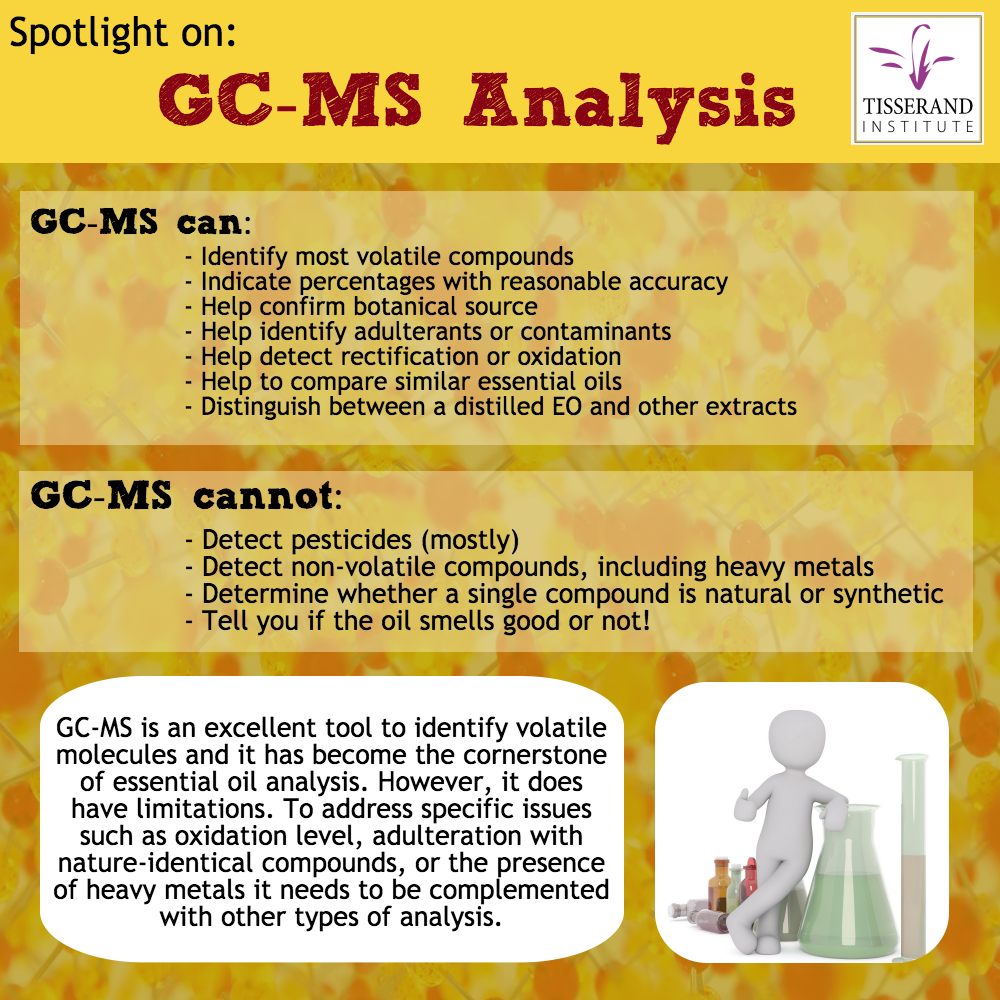
by Hana Tisserand | Aug 16, 2017
We asked Alexis St-Gelais, one of the founders of Phytochemia, to shed some light on gas chromatography – mass spectrometry analysis (GC-MS). He covers the basics, and then examines in detail what GC-MS can… and can’t do. Providing a GC-MS analysis is rapidly...
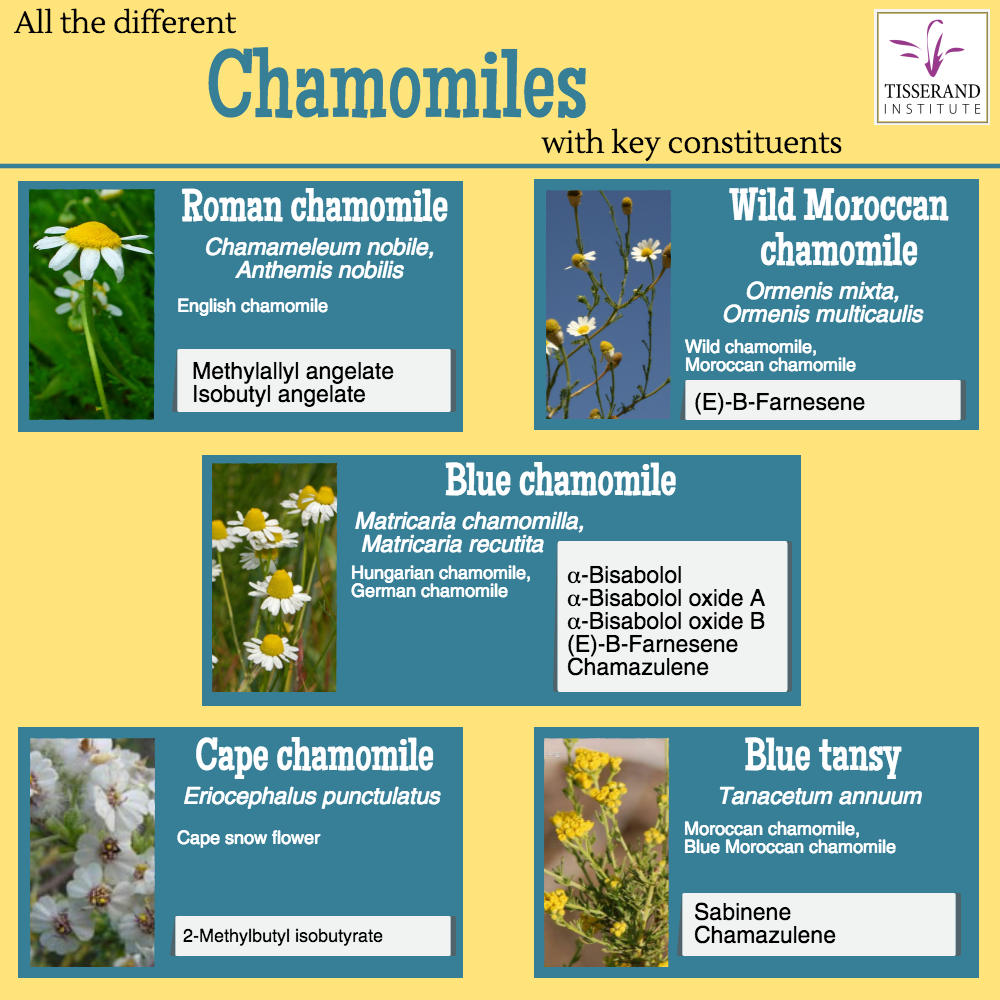
by Hana Tisserand | Apr 2, 2017
Chamomiles can be confusing! Have you ever been puzzled with names of different Chamomile oils? Terms like “Blue chamomile” and “Moroccan Chamomile” may refer to quite different essential oils. That’s why we have botanical names of...
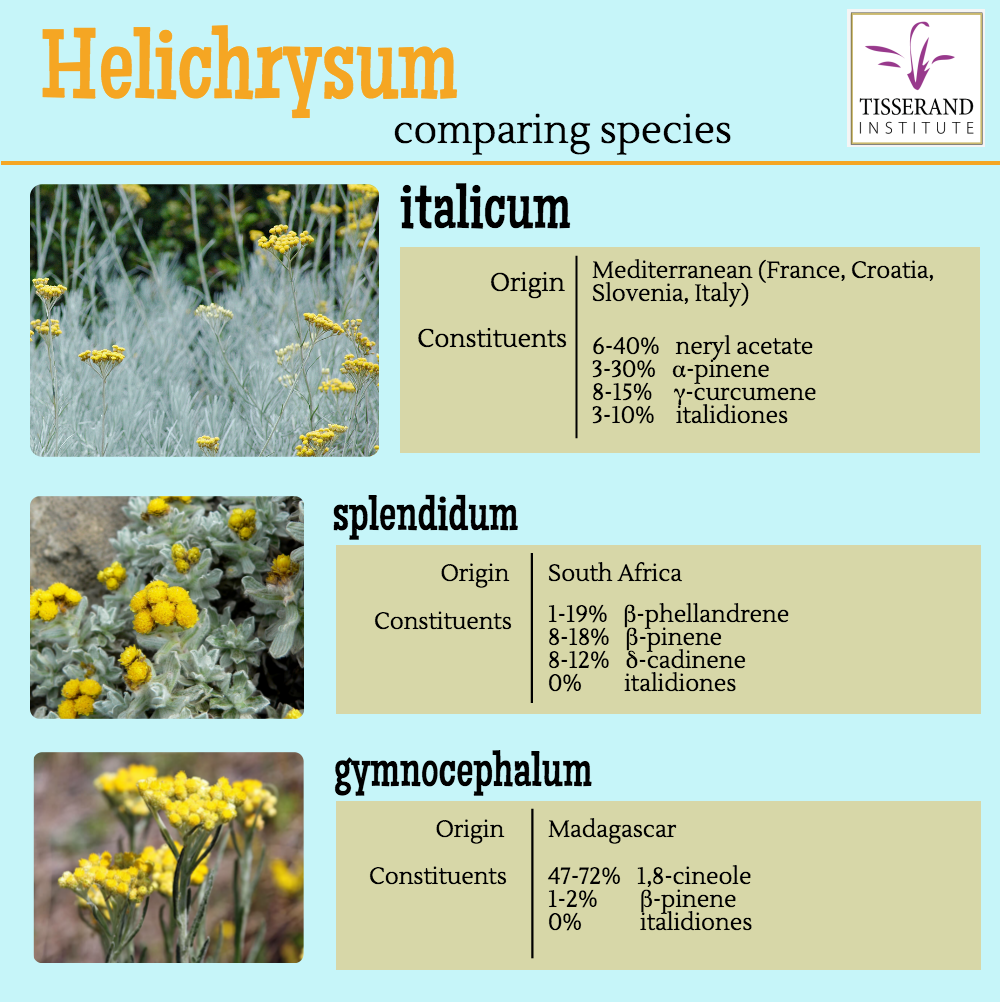
by Hana Tisserand | Mar 27, 2017
Not all helichrysums are created equal – today we compare the three species that are most commonly used for essential oil production. The best known and most sought-after species is Helichrysum italicum. Also known as Immortelle or curry plant, this tiny shrub...
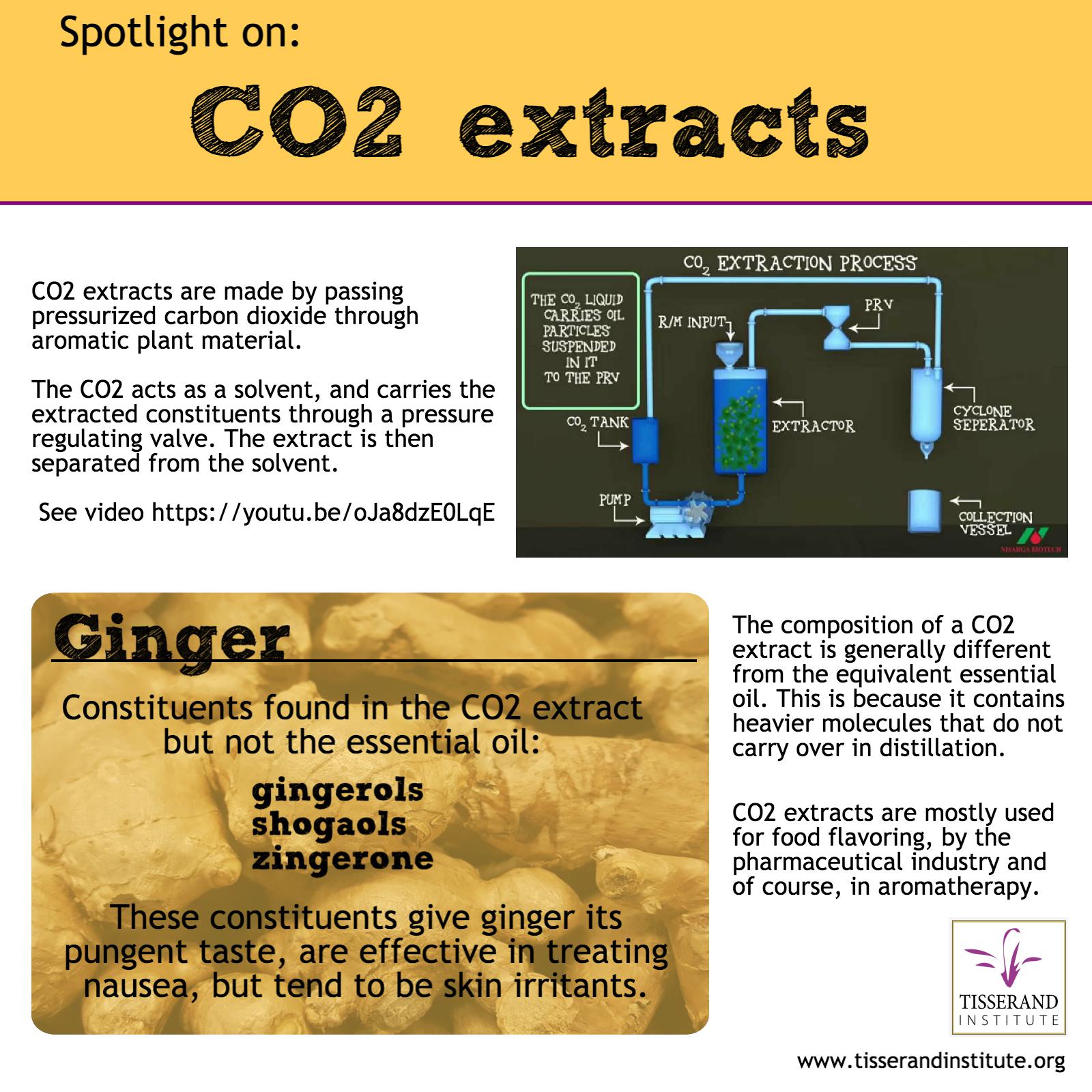
by Hana Tisserand | Mar 8, 2017
CO2 extracts – what are they and why are they useful? These extracts are made by passing carbon dioxide through aromatic plant material. The CO2 is in a “supercritical” state, meaning it has the properties of both a liquid and a gas. This is because...
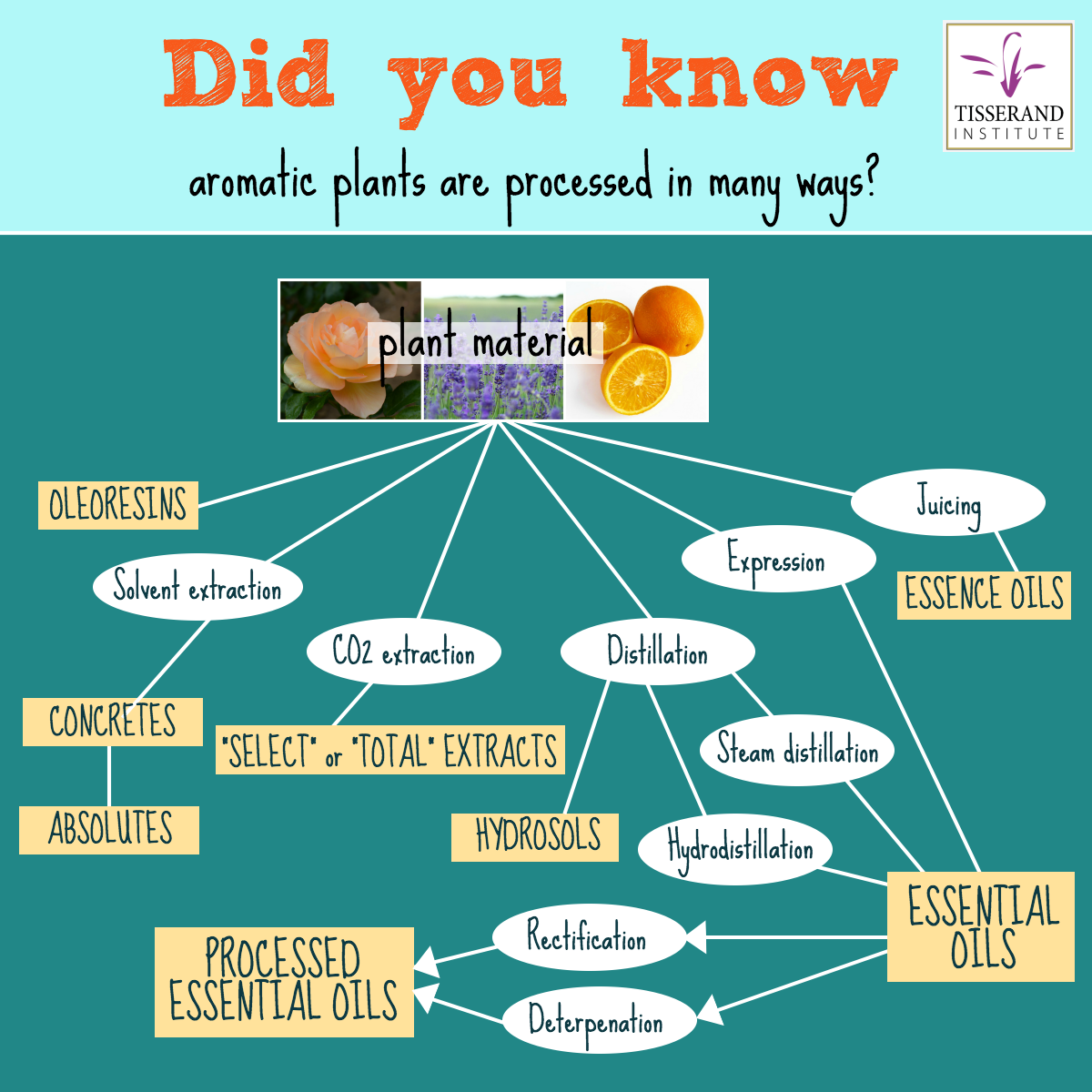
by Hana Tisserand | Mar 8, 2017
Did you know aromatic plants are processed in many different ways? This infographic offers an overview of the most common processes to get aromatic material, which is used in aromatherapy, perfumery and food industry.
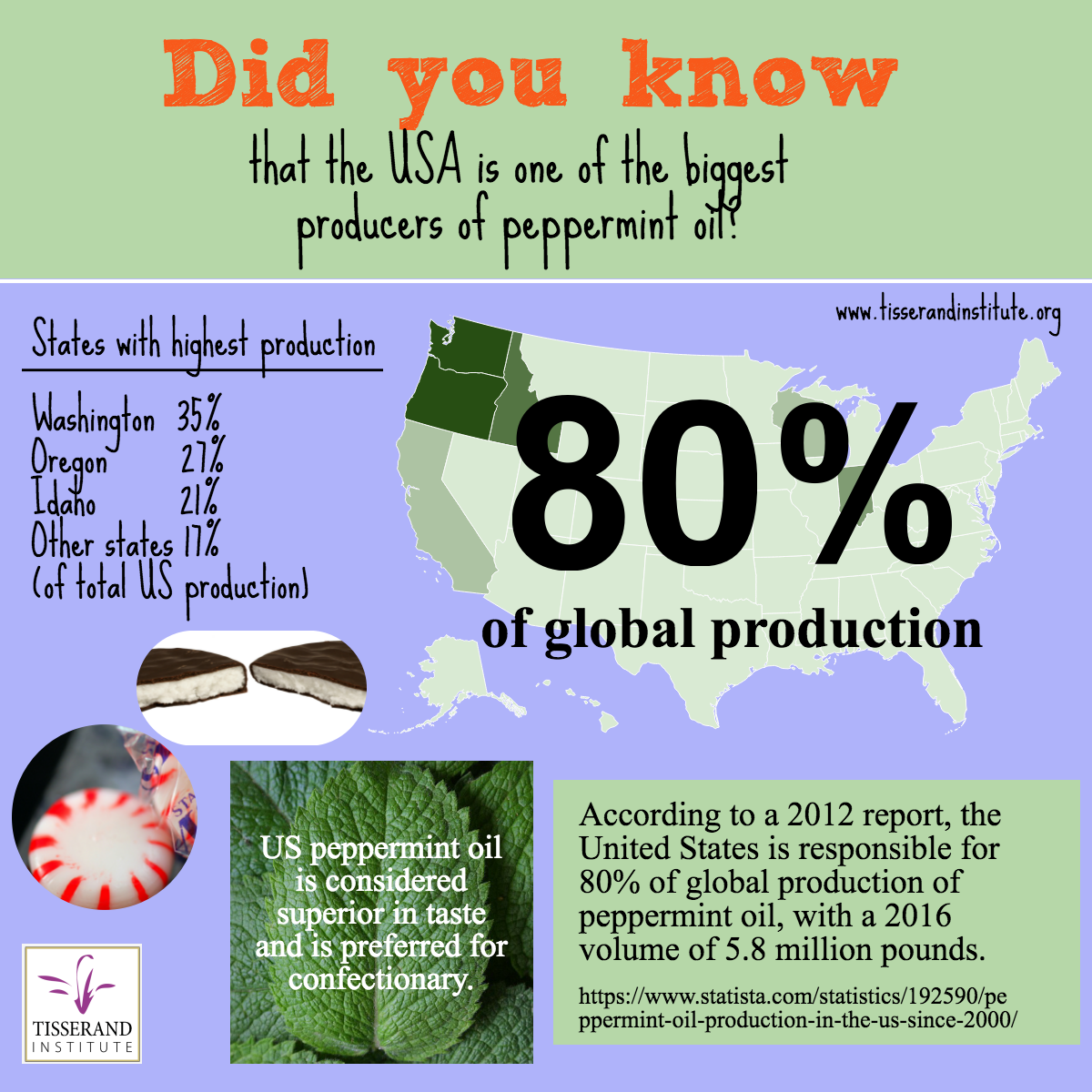
by Tisserand Institute | Feb 6, 2017
Did you know that the US is the biggest producer of peppermint oil? In 2012, US production accounted for 80% of the global volume. The amount of peppermint oils produced in 2016 was 5.8 million pounds! Most US peppermint oil comes from Washington (35%), Oregon (27%)...







